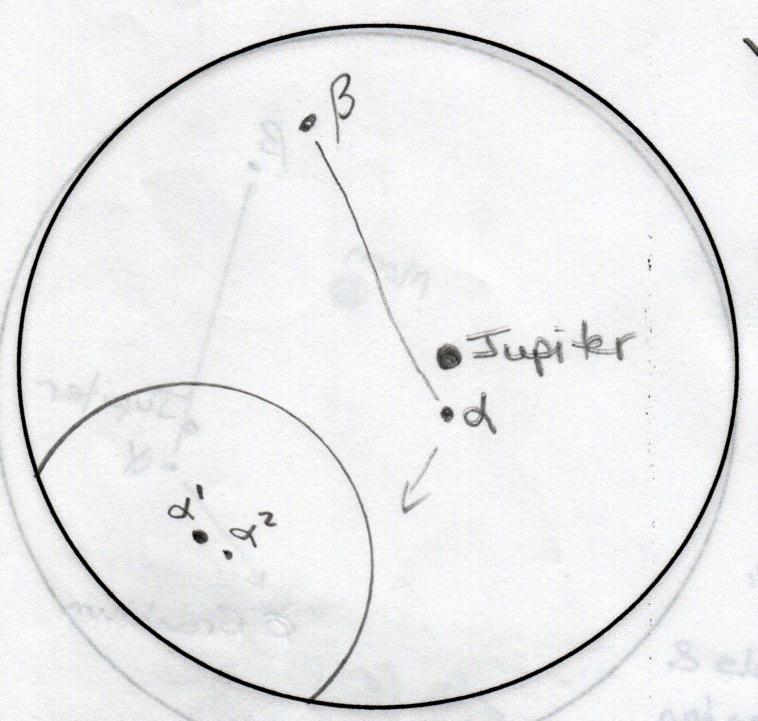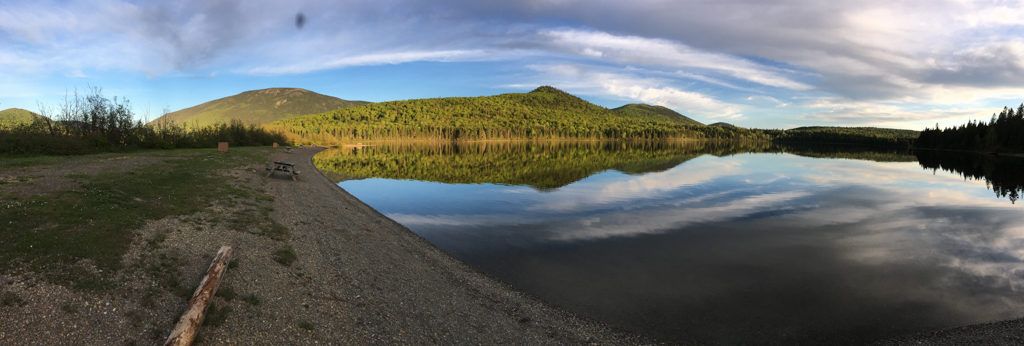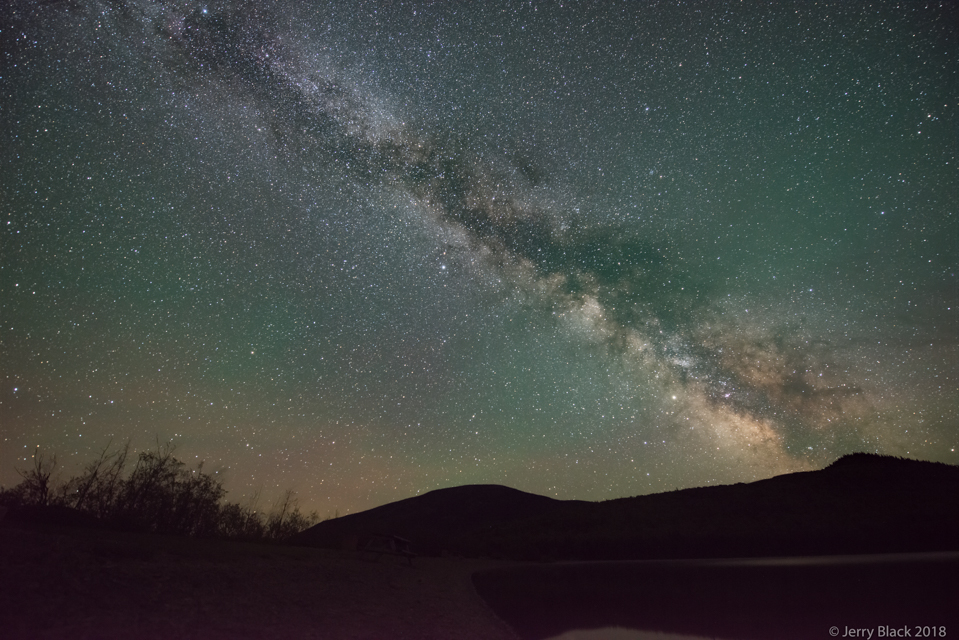|
Scorpius
Time: 10:10 PM ADT
Equipment: Visual
S&T Chart Reference: 56, 58, J
Antares was the second bright object identified this evening (after Jupiter). Visually, it was twinkling two colours - red and a gold-white. The red stood out for the majority of the time. Eventually, Graffias, δ, π, ρ and ν became visible and eventually could also see τ and ε rise above the mountain ridge.
Satellite
Time: 10:10 PM ADT
Instrument: Binoculars
Was looking through binoculars at Antares when the satellite entered my FOV. I followed it from Scorpius across the sky to Sadr in Cygnus where I lost sight of it. Never have I been able to follow a satellite for such a long distance across the skies.
|
Aquila
Time: not recorded
Equipment: Visual
S&T Chart Reference: 64, 65, 66
First identified the star Altair and its adjacent stars Tarazed (γ) and Alshain (β). Could identify the stars in its wings to the tips and all the way down to λ. It was amazingly clear. The light and dark lanes of the Milky Way were phenomenal!!
Boötes
Time: not recorded
Equipment: Visual
S&T Chart Reference: 42, 44, 53, 55
Arcturus was very bright in the early evening sky. It wasn't until much later the other stars of the "kite" could be located and identified, except λ, θ and κ.
|
|
Ursa Major
Time: 10:52 PM ADT
Equipment: Visual
S&T Chart Reference: 31, 32, 33, 43, F
Didn't look for this constellation initially as it was behind us above the trees and we were looking at the mountains opposite it. It wasn't until we were trying to follow this incredible Milky Way that we saw it. Identified the Big Dipper asterism but none of the other stars. Used the pointer stars to locate Polaris in Ursa Minor.
|
Cygnus
Time: 11:10 PM ADT
Equipment: Visual + Binoculars
S&T Chart Reference: 62, 73, H
Once identified as Cygnus, I could see 2 stars in each direction from Sadr, then all the way down to Albireo. Looked at Albireo with binoculars and could see the double blue and gold-yellow stars very clearly. East to find the Coathanger from there.
|
|
Cassiopeia
Time: 11:15 PM ADT
Equipment: Visual
S&T Chart Reference: 1, 3, 72
All the stars of Cassiopeia could be seen and identified. However, the constellation was not high enough in the sky at this time to locate M31 nor Kemble's Cascade.
Satellite
Time: 11:25 PM ADT
Instrument: Binoculars
Looking at Corona Borealis when the satellite entered my FOV. It was followed to δ Cygni before disappearing.
|
Lyra
Time: 11:32 PM ADT
Equipment: Visual + Binoculars
S&T Chart Reference: 63
Vega easily located and seen visually. Used my binoculars to observe the 3 sets of double stars - ε, ζ and δ. Didn't look for ν1 or ν2.
Delphinus
Time: 11:48 PM ADT
Equipment: Visual + Binoculars
S&T Chart Reference: 64
Was looking at Cygnus when Delphinus caught my eye. Not very bright this evening but did see all 5 stars of the constellation.
|
|
Coathanger / Collinder 399 / Brocchi's Cluster
Time: 11:35 PM ADT
Equipment: Visual + Binoculars
S&T Chart Reference: 65
Found Albireo in Cygnus, then easily found the Coathanger. HD182293 wasn't seen but the other 5 of the hanger and all 4 of the hook easily seen. And, yes, it was upside-down again and tilted at about 40º - 45º.
|
Satellite
Time: 11:35 PM ADT
Instrument: Visual
Looking at the Keystone of Hercules to determine if I could see M13. Satellite appeared, travelling from eta Hercules to zeta Hercules (parallel to this line) before disappearing in Draco.
|
|
Summer Triangle / DAVe
Time: 12:05 AM ADT
Equipment: Visual
Could easily see all three stars of the DAVe asterism - Deneb (in Cygnus), Altair (in Aquila), and Vega (in Lyra).
|
Corvus
Time: 12:05 AM ADT
Equipment: Visual
Just happened to look over to the lake's far shore and saw Corvus above the low-lying hills. Crater had already gone below the horizon. Could see all 5 of the main stars; just a little faint but still could be easily seen.
|
|
Jupiter (in Libra)
Time: 12:02 AM ADT
Equipment: Visual + Binoculars
S&T Chart Reference: 46, 57
Jupiter was the first object we could see in the early night sky. β Librae was almost directly above α Librae.
Using binoculars, was able to see α1 Librae and α2 Librae that were adjacent to Jupiter.
|

|


